algs4.jar/Stopwatch
public static void main(String[] args){
int[] a = In.readInts(args[0]);
Stopwatch stopwatch = new Stopwatch();
StdOut.println(ThreeSum.count(a));
double time = stopwatch.elapsedTime(); // time since creation (in seconds)
}
复杂度计算
Log-log plot
For given data like in standard plot,
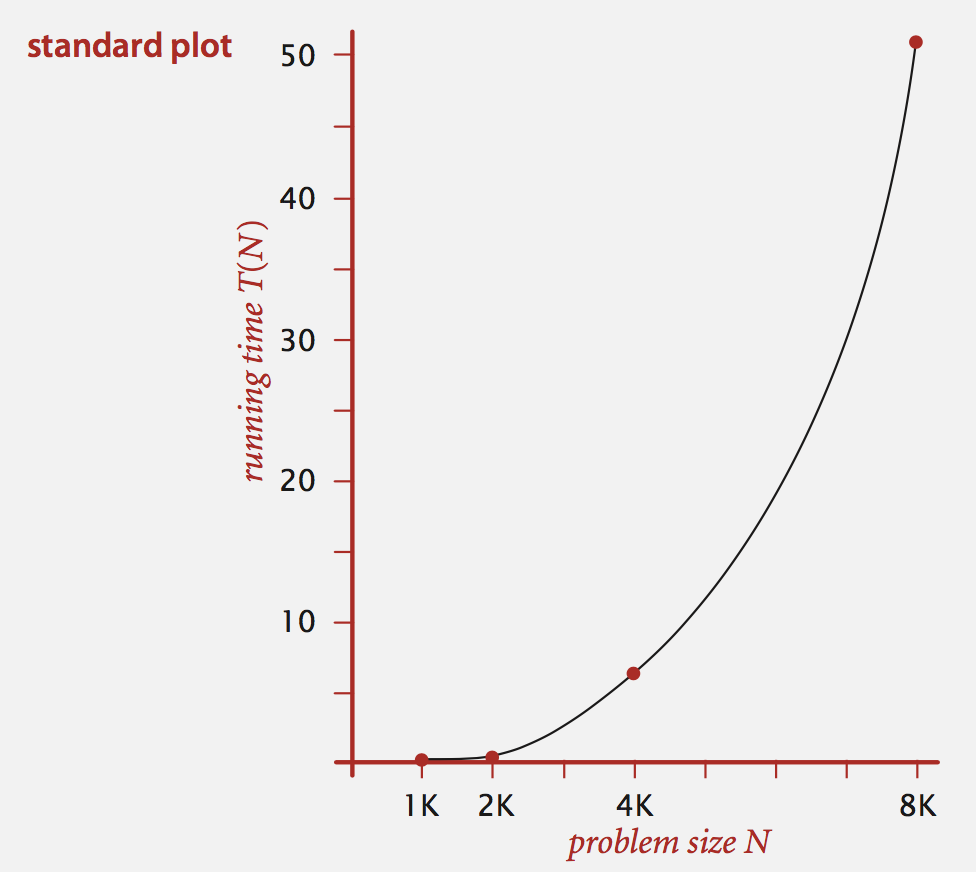
way to find out its T(N) is by: Log-log plot:
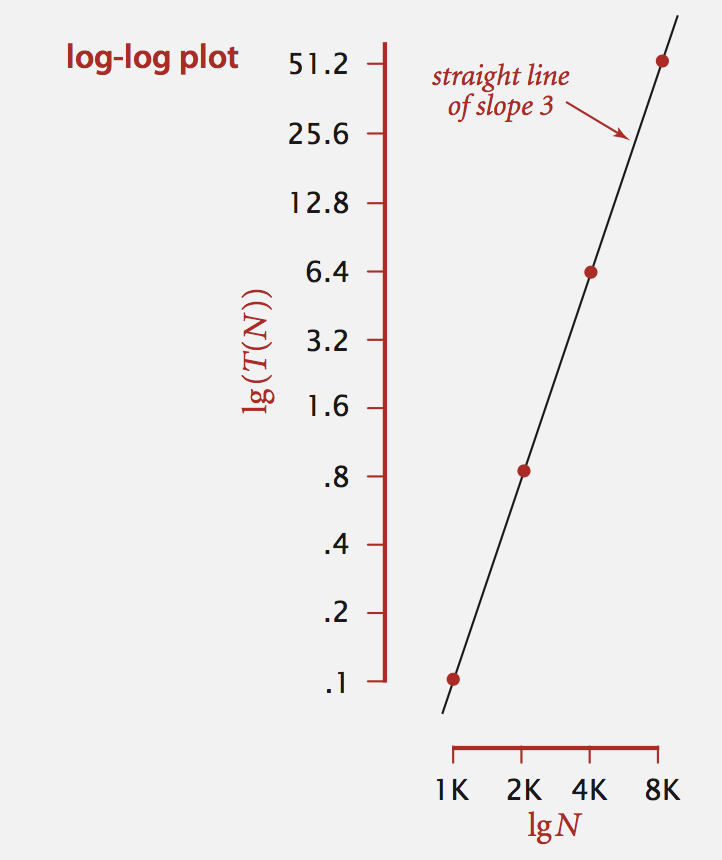
where we calculate by
lg(T (N)) = b lg N + c
T (N) = a N^b, where a = 2^c
in this case,
b = 2.999
c = -33.2103
so,
T(N) = 1.006 × 10^–10 × N^2.999
Assume b = 3, run multi times to estimate a.

常用公式
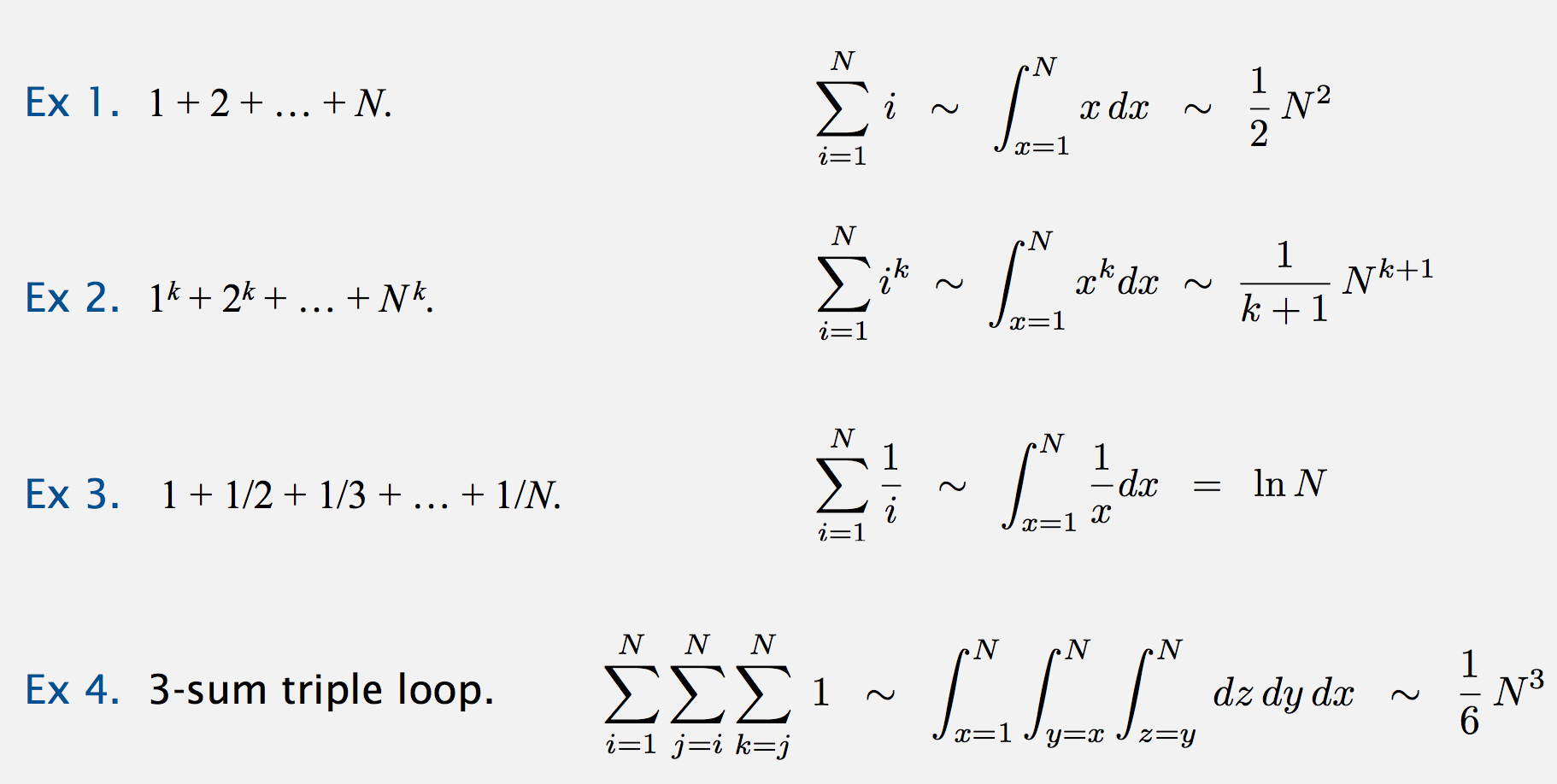
log-log plot 对应 复杂度
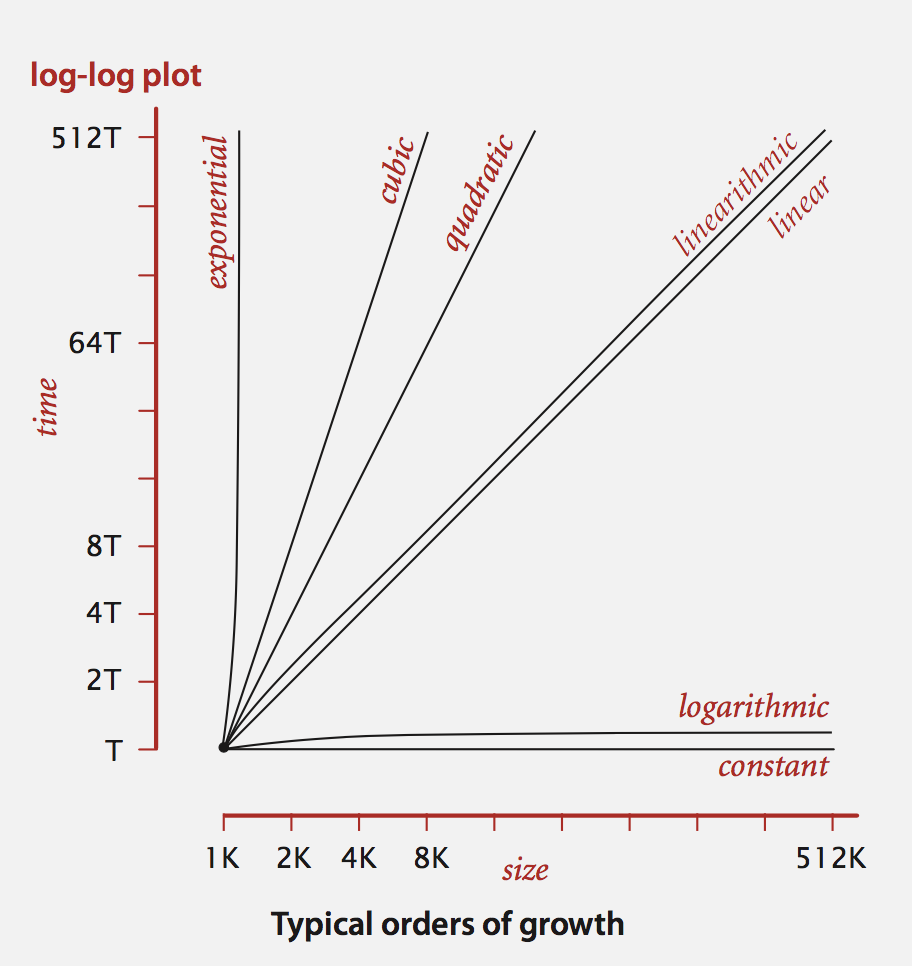
常见复杂度
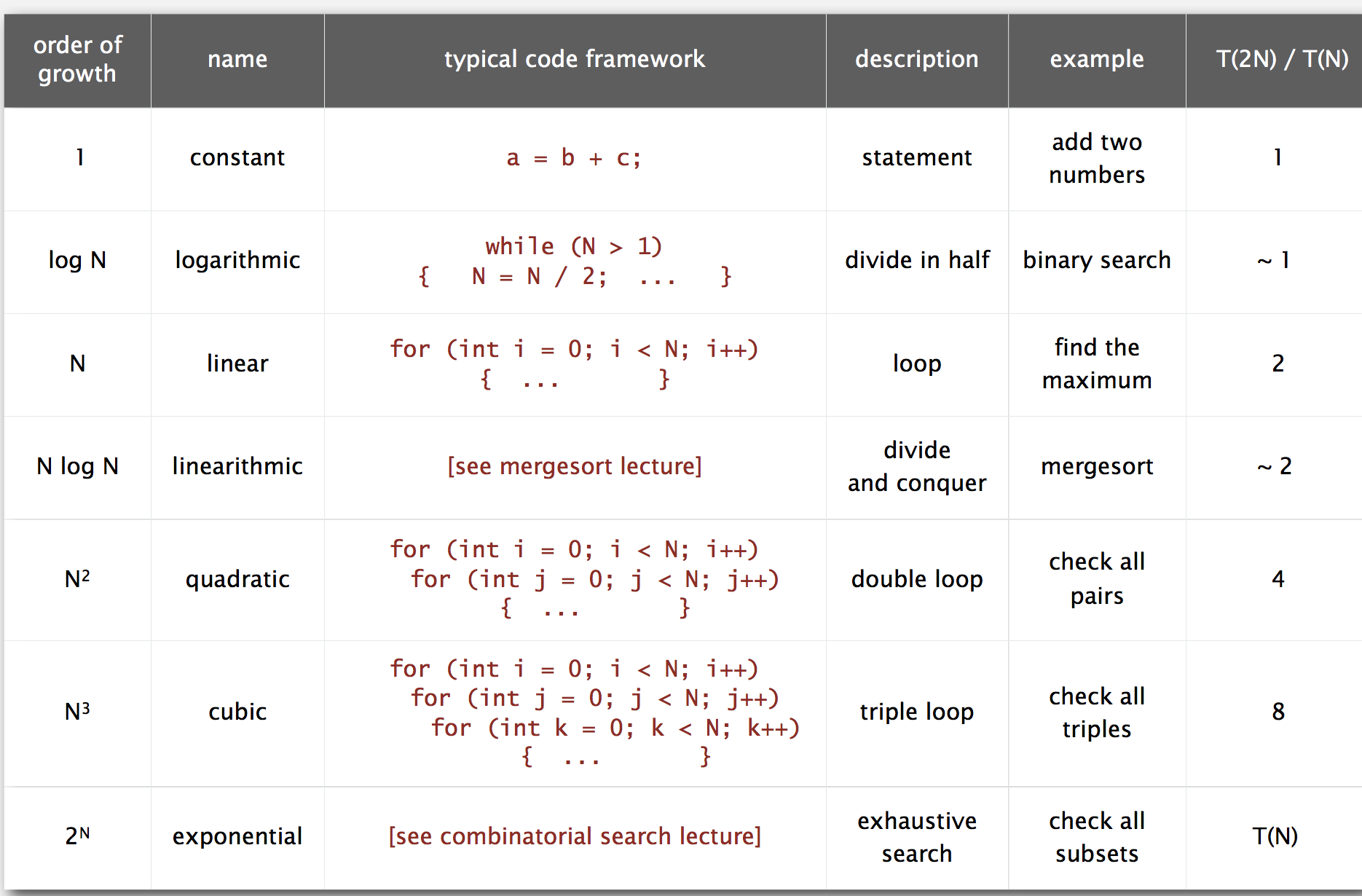
复杂度对比
Cases
- Best case. Lower bound on cost.
- Worst case. Upper bound on cost.
- Average case. “Expected” cost.
衡量算法的方式
- 看最差:design for the worst case.
- 算预期:randomize, depend on probabilistic guarantee.
常用衡量符号
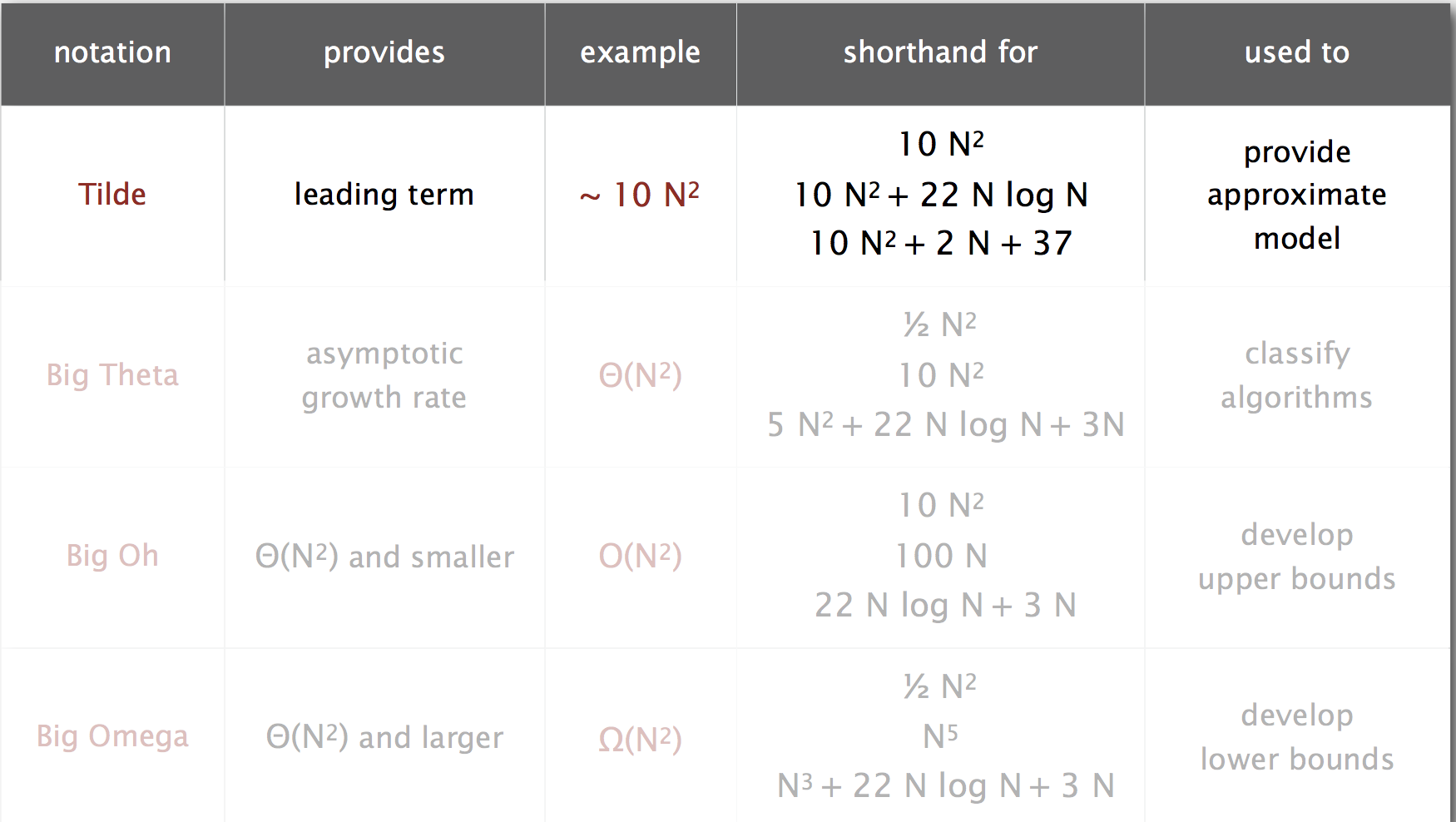
衡量一个具体问题的复杂度的例子
Goals
- Establish “difficulty” of a problem 确定一个问题的复杂度(不是算法的复杂度)
- Develop “optimal” algorithms.
- Ex. Q: 1-SUM(“Is there a 0 in the array? ”)
Upper bound. of A specific algorithm.
- Ex. Brute-force algorithm for 1-SUM: Look at every array entry.
- Running time of the optimal algorithm for 1-SUM is O(N).
对于一个确定算法——“依次寻找每个值”,它的最坏情况下(如果每个都不是0)的复杂度,是 O(N)
Lower bound. Proof that no algorithm can do better.
- Ex. Have to examine all N entries (any unexamined one might be 0).
- Running time of the optimal algorithm for 1-SUM is Ω(N).
事实上,对于任何一个算法,都必须检查每个值,因此这个问题下的所有算法,它们的最好时间复杂度也是 O(N),因此本问题的最低时间复杂度Ω,是 Ω(N)
Optimal algorithm.
- Lower bound equals upper bound
- Ex. Brute-force algorithm for 1-SUM is optimal: its running time is Big Theta of N.
于是我们获得结论,刚刚那个确定算法,的确是最佳算法了。
算法进化论
- 如果当前的 Upper bound 和 问题的实际最低复杂度 Lower bound 不相等,即中间还有 Gap, 那么就是说这个算法还有优化空间
- 新算法就要落在 Upper bound 和 Lower bound 之间,不能超过暨有的最优值。也就是说新算法肯定要比老算法强,以老算法为上限。
注意每个符号的意义,不要误将O(n)认为是算法复杂度,其实~(n)才是
Memory
Basic
- Bit. 0 or 1.
- Byte. 8 bits.
- 32-bit machine: with 4 byte (32/8=4) pointers
- 64-bit machine: with 8 byte pointers
- 32/64 diff: Can address more memory; Pointers use more space.